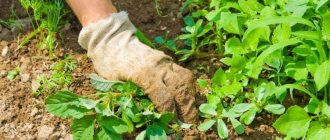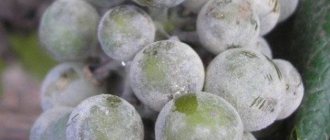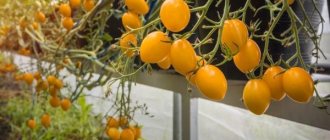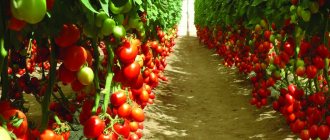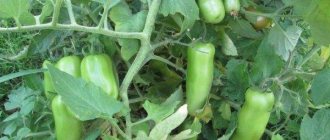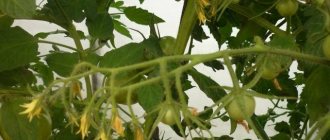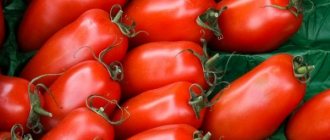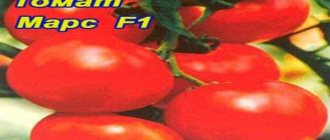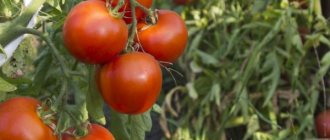general information
Fenda F1 tomatoes are an indeterminate tall hybrid that is most often grown in heated greenhouses and greenhouses. In hot climates, the yield reaches 40 and even 50 clusters. The height of the plant can be two meters. In our country, especially if you grow tomatoes in a greenhouse, it is recommended to form the bushes into one stem.
Like other tall hybrid varieties, Fenda tomatoes should be strengthened in time by tying. If the plant is grown in fields and open beds, stakes or a trellis are used for supports. Remember that to create a bush with one main stem, you will have to constantly trim all the stepsons. The first flower clusters appear approximately after the 9th true leaf, and then after every 3rd, new ones are laid.
Proper care
Regardless of what kind of tomatoes you planted - tomato Forty Sotok f1, tomato Fidelity f1 or tomato Important Person - you need to organize regular watering with warm water in the morning and evening, and after that the soil should be thoroughly loosened.
In order to get the harvest that the description of the variety promises, you need to plant the tomatoes in a timely manner. This is also done with such varieties as tomato Seven forty f1, Spetsnaz tomato, Fat Monk tomato, Golitsyn tomato, Fitous tomato. This process removes excess shoots that can weaken the plant and lead to poor fruiting.
Experts recommend, in addition to the main branch, to leave another strong stepson, on which there is a formed flowering brush. The rest should be broken off so that only two-centimeter cuttings remain, which will interfere with the appearance of new shoots. The plant should not be tied up.
Regular fertilizing significantly increases productivity. There should be at least four of them during the entire growing season. A mineral complex is perfect for this. It is also ideal for the Izyuminka tomato, the Lord of the Steppes tomato, and the Evgeniya tomato. Tomatoes also respond well to organic fertilizing. Nettle infusion is suitable for this. Weeding and loosening of the soil should be carried out throughout the season. In this case, the grass can be used to mulch your beds.
Tomato Pink Flamingo: description and characteristics, nuances of cultivation
Distinctive features of the variety
Fenda tomatoes begin to bear fruit quite early. The duration of the tomato ripening period ranges from 60 to 110 days.
Description of an adult plant: a powerful bush on which large leaves are attached, the trunk is tall, thick and straight. Approximately 10 clusters are formed, and fruits - up to 50 pieces per bush.
Tomatoes have a flat-round shape and a pleasant pink color. Ripe fruits have hollow seed chambers (six or more). The tomatoes are tasty, with little or no sourness. Even among other rose varieties, Fenda stands out for its sweetness and sugariness.
Features of the characteristics of the Fend hybrid
The height of the bushes reaches 2 meters; in greenhouses, growth is unlimited. The growing season of the variety is 70-80 days. The main stem is straight and strong, the leaf blade is quite large, and the rhizome is well developed.
6-10 ovaries are formed on one bunch. A ripe tomato weighs from 250 g to 400 g, the shape of the tomato is round with a pink color. The increased sugar content gives the fruit a sweet taste with a slight sourness. Inside the dense vegetable there are 6 chambers containing seeds. The pulp is fleshy and juicy.
One plant can have 40-50 fruits. Up to 25 kg of tomatoes are harvested from one square. Thanks to its early ripening period, the Fenda variety can be grown twice per season: from spring to summer, from summer to autumn.
Purpose of the variety
The sugary taste and fleshy pulp are suitable for preparing a variety of tomato sauces, ketchups and juices. Fresh tomatoes are added to salads, and tomatoes can be preserved in pieces.
Advantages and disadvantages of a hybrid
Main advantages:
- tomatoes are transportable;
- the skin is dense, the fruits do not crack;
- bushes can be grown under film or without it;
- excellent taste and attractive appearance;
- The variety is resistant to many diseases.
Flaws:
- tall bushes require constant garters;
- The variety is demanding on fertilizing.
How to get tomato seedlings
It is preferable to plant Fenda tomato varieties in greenhouse structures rather than in open ground. This is what it was created for. Planting method: seedlings. It is best to grow young tomatoes yourself. For sowing, buy material only from reliable suppliers and carefully study the labels on the packaging.
Before planting seeds, it is important to remove small and damaged elements. The first thing to do is to immerse the material in salted water. Those seeds that have sunk to the bottom are used for sowing. Of course, they need to be washed in advance and kept for 10-15 minutes in a weak solution of potassium permanganate.
Gardeners recommend planting young seedlings in the following ways:
- in the soil mixture;
- in coconut fiber;
- in peat tablets.
Sowing conditions
According to the description of the Fenda tomato, the best time for sowing is the beginning of spring (the first days of March), when daylight hours begin to increase. Temperature plays a special role in the normal development of the hybrid form. Initially, it is best to maintain a room temperature of plus 22°-23°, after which the values are gradually reduced to plus 17°-19° so that the seedlings do not grow upward.
Young tomato sprouts dive into pots or paper cups at the moment when the first two leaves appear. To get a rich harvest, it is best to water the seedlings with rain and melt water. If you do not have time to collect it or these actions are not justified, because the plantings occupy large areas, then you can use two tablespoons of hydrogen peroxide for one liter of water. An excellent option would be to install an artificial light source near the greenhouse plantings.
After planting the plants in the ground, they are watered abundantly and sprinkled with mulch, the thickness of which reaches 100 mm. The seedlings are not disturbed for 8-10 days, which allows them to take root well. If the soil is well mulched, the bed does not need abundant watering during this period.
Protection from diseases and pests
The description of the Fenda F1 tomato variety includes high resistance to disease. Tomatoes are rarely infected with mosaic, Alternaria, brown spot, and late blight. Infection is possible if planting rules are violated, already infected material is used, or due to lack of proper care. There is also a high risk of disease in regions with high humidity and frequent seasonal rains.
Fungicides are used for treatment - seedlings are treated with Bordeaux mixture 0.6% or with Kuprosat, Infito or Antrakol. For prevention, it is necessary to use sterile seeds, remove weeds from the site in a timely manner, follow the planting scheme, water only when the soil dries out and feed regularly.
Pests on tomatoes may include aphids, armyworms, and the Colorado potato beetle. To destroy parasites, systemic insecticides are used - Karbofos, Actellik or Fitoverm.
All treatments against diseases and harmful insects are carried out a month before the planned harvest.
How to care
Experienced gardeners advise watering Fenda tomatoes every 4-5 days until the flowering period, and after that - twice as often. It is not recommended to pour water on the leaves. Hybrid plants need to be moistened at the root, in the morning. When removing stepchildren, the “stumps” should be preserved in order to prevent overgrowth. This is necessary for the normal development of the main trunk and brushes on which the fruits will form.
The Fenda F1 tomato was created by breeders with the goal of obtaining large yields, and therefore, plants take nutrients from the soil faster than all known varieties. Of course, for this reason, it is worth adding fertilizers to the soil in the garden bed more often. However, it is not recommended to exceed their norm in this situation. It is quite possible to compensate for the lack of nutrients only by increasing the frequency of fertilizing. According to reviews, the Fenda tomato produces a good harvest with foliar application of fertilizers.
Let us clarify what nutrients are added to the soil to improve the growth of the hybrid and accelerate the process of fruit ripening:
- Potassium. It is able to increase the growth of the root system, promotes the normal transport of water and nutrients along the stems, and accelerates the accumulation of carbohydrates. Potassium is directly involved in the synthesis of vitamin C. When a sufficient amount of potassium fertilizer is applied, the fruits of the Fenda tomato become brighter and more aromatic, and are able to maintain excellent taste for a long time. Hybrid varieties, for example, Fenda F1, consume several times more potassium nutrient mixtures than conventional varieties require.
- Phosphorus. This component is important for the normal ripening of fruits, the growth of stems and seeds. With a lack of phosphorus, shoot growth is delayed, the color crumbles or does not appear at all.
- Nitrogen. Thanks to this element, the growth of the bush increases and the tops turn a rich green color. If you do not calculate the proportions and add more nitrogen to the soil, then the plant will “fatten” - all the nutrition will be spent on the development of stems and foliage.
Tip: when feeding, it is important to maintain the proportions of fertilizer application so that there is 4 times more potassium than nitrogen.
Pink-fruited gift from France - Fenda F1 tomato: reviews on cultivation, description of the variety
Summer residents should be interested in the modern hybrid tomato Fenda F1 of French origin. It is suitable for growing in greenhouses, and in the southern regions of the country - in open ground. Its fruits are painted in everyone’s favorite bright pink color and look very appetizing.
| Height | Landing location | Ripening time | Fruit color | Fruit size | Origin | Fruit shape |
| Tall | Greenhouse, Open ground | Mid-season | Pink | Average | Variety | Round |
Description and characteristics of the variety
The cultivar is a tall indeterminate. Fruits for salad purposes, mid-ripening. From germination to the first harvest, 100-115 days pass. Tomatoes weighing 100 g, multi-celled, pink-raspberry color, round in shape, dense.
In what regions is it grown?
The cultivar was bred in 2009, entered into the register in 2011. Originator Hm. Clause SA, France. The variety can be grown in open ground and under shelters in all regions of the Russian Federation. It is intended for personal subsidiary plots.
Advantages and disadvantages
- resistance to soil nematodes and a number of diseases;
- excellent taste;
- can be cultivated in open ground;
- marketable condition;
- transportability.
Minuses:
- tall bushes need to be constantly tied up,
- you cannot collect your own seeds,
- balanced feeding is required.
Productivity
The officially registered yield of marketable fruits in open ground is 3 kg/sq.m. Summer residents speak of the productivity of the Fenda hybrid as good.
Features of cultivation and storage
Requires cultivation through seedlings. Seeds are rarely available for sale, so you need to look at the expiration date on the label. Pre-sowing treatment is not needed.
Seedlings are planted in open ground or a greenhouse, 3-4 bushes per 1 square meter. m. The optimal way of forming is in two stems.
Planting and care
Seeds are sown at a temperature of 20-25 degrees. The box is covered with a transparent, moisture-proof material and placed in a bright place.
Seedlings are kept at a temperature of 20-22 degrees. The day before planting in open ground, spray with Epin - an ampoule for 5 liters of water.
The bed is prepared several weeks before planting. The soil is dug up along with fertilizers. Per square meter there should be: 2-3 liters of humus, a tablespoon of superphosphate, a tablespoon of any potassium salt.
Once every 4-5 days, water the tomatoes with warm water. Each plant should have at least 5 liters. Watering should be done in the morning or evening. Even if the bushes have hung their leaves in the midday sun, you cannot rush to them with a hose. In the evening they will wait for their portion of moisture and immediately come to life.
Features of fertilizing
A rich harvest of hybrid tomatoes is possible only with timely and well-designed fertilizing.
Potassium promotes the accumulation of sweetness and increases frost resistance. It is added to the soil when the ovaries begin to form and the fruits ripen. Instead of potassium salt, you can use liquid foliar feeding with potassium humate. Two tablespoons of fertilizer are diluted in 10 liters of water and sprayed on the leaves.
Phosphorus is necessary for the transition of plants from flowering to fruiting. An element is added twice per season:
- when plants bloom en masse,
- when the fruits begin to ripen.
Nitrogen promotes the growth of leaves and stems. With its deficiency, plants become pale.
Organic matter contains a lot of nitrogen. Its overdose causes the bushes to become fatty, they produce many leaves and few fruits. Therefore, you cannot add humus more than the recommended norms. For tomatoes on well-amended soil with organic matter, one nitrogen fertilizing during the formation of ovaries is sufficient.
Gardeners' opinion
Tomato Fenda F1 is a fairly new variety that has already earned excellent reviews from domestic and foreign vegetable growers who immediately tried the tomatoes. Many gardeners note that the weight of one tomato under standard growing conditions was 600 grams. According to reviews, Tomato Fenda F1 has the following advantages - pleasant taste and large fruit. The latter is important for those who grow vegetables for commercial purposes. Everyone who once planted this hybrid in their beds plans to grow Fenda F1 tomato in the future.
Transplantation into the ground
The age of seedlings at the time of transplantation to a permanent place is 50-60 days. By this time, the seedlings already have 6-8 leaves and a height of 25-30 cm.
Tomatoes are transplanted into soil prepared and disinfected in advance according to a 50x40 cm pattern in a checkerboard pattern (there should be 3-4 bushes per 1 m²). 1-2 tbsp is poured into each hole. l. wood ash and water well.
The seedlings are moved into the hole along with the lump of soil in which it grew. The soil around the stem is carefully compacted and watered again with warm water. The top layer of soil is covered with mulch, which will help retain moisture and prevent the growth of weeds in the garden bed.
By properly caring for a tomato, the gardener will be able to get the rich harvest declared by the manufacturer, and will also protect the plants from diseases.
Watering
Moderate watering is carried out as the soil dries in the morning or evening. For this purpose, settled heated water is used. Drip irrigation is mainly used when moisture falls directly under the root of the crop.
Feeding
Fenda F1 tomatoes respond positively to additional fertilizing. An indeterminate bush draws large amounts of nutrients from the soil. Therefore, to get a good harvest, gardeners recommend applying fertilizers at the roots according to the following scheme (calculation per 10 liters of water):
- after planting - 20 g of ammonium nitrate, 50 g of double superphosphate, 10 g of potassium chloride;
- in the flowering and ovary formation phase - 80 g of double superphosphate, 30 g of potassium nitrate;
- during the fruiting period - 40 g of superphosphate, 40 g of potassium nitrate.
Garter
Based on the characteristics, the tall Fenda tomato bush requires staking and formation of the bush into one stem. The first tying is carried out 10-14 days after planting the seedlings, all subsequent ones - every 20-25 days.
